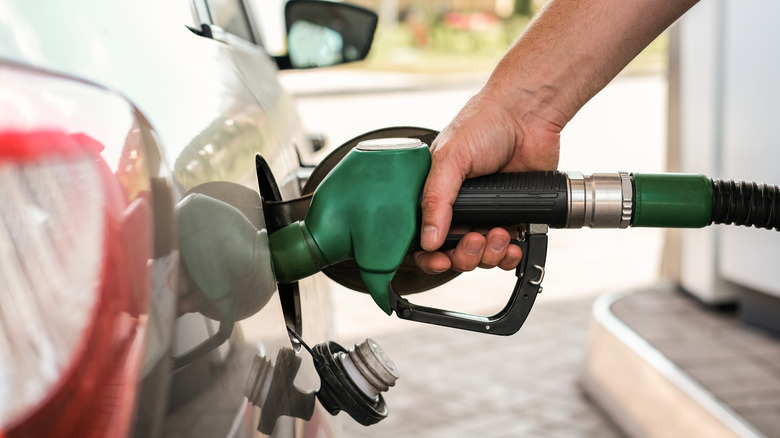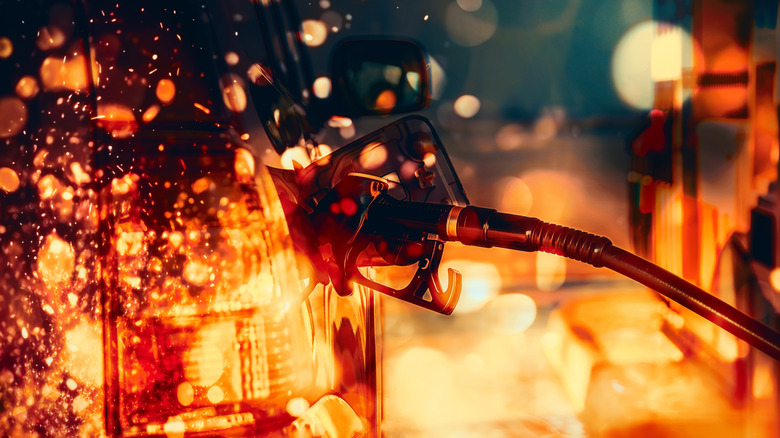The Simple Trick That Could Save Your Life When Pumping Gas In The Winter
Did you know that just 1 gallon of gasoline has the same explosive force as 14 sticks of dynamite? With static shock occurring more often in the winter because the air is colder and dryer, there's a higher chance than in other seasons of sparking a static-related fire when pumping gas. Fortunately, you can prevent such an incident by simply touching metal before picking up the pump nozzle and waiting to get back in your car until you're done pumping.
Basically, your body gets a positive charge as it loses electrons when you rub up against anything, including the seat of your car. Usually, water vapor in air conducts the charge away from you, but since cold air holds less moisture, the positive charge remains for longer and can build up until you come into contact with something that has a negative charge. If the first negatively charged object you touch is a gas nozzle, the spark from the discharge and either residual drops of gas or gas vapors can trigger a fire.
One of the best ways to get rid of static electricity in your body before pumping gas is to touch something that's metal, such as your vehicle door, the fuel tank cover, or a metal part of the fuel pump. Also, don't sit back down in your car because the friction of getting in and out again will rebuild that static charge in your body, creating the potential for a spark if you don't discharge it before taking the pump nozzle out of the fuel tank. If you have to reach back inside your vehicle for any reason, touch something metal before you touch the nozzle again.
Frequency of static-ignited gas station fires and how to react
Gasoline is a common fuel used in our daily lives, with motorists refueling their vehicles up to 12 billion times a year without any issues, according to the Petroleum Equipment Institute. However, the organization and National Highway Traffic Safety Administration received 176 reports of static-ignited fires at gas stations across the country between 1992 and 2010. Of these cases, 39 started before refueling began, while 87 started after the motorists returned to their vehicles while pumping but didn't discharge the static in their bodies before touching the gas nozzle again. Additionally, there was a clear prevalence during the winter over other seasons, with more than 20 reported incidents occurring in the winter months of December, January, February, and March.
If you ever experience a fire while refueling your vehicle, your initial reaction might be to pull out the nozzle. However, doing that only allows more oxygen to stimulate the flames, igniting any gasoline that streams out like a flamethrower and causing more property damage. Instead, you should leave the nozzle in the tank where there isn't enough oxygen to cause an explosion. Then, turn off the pump at the lever, step away from your car, and alert the staff so that they can shut off all the pumps at the emergency switch. With the gas flow turned off, the flames will burn out on their own.

